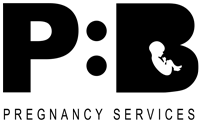For around half to three quarters of pregnant women, some degree of low back pain and pelvic pain is inevitable (Colliton, 1996). The prevalence and level of pain tends to increase as the pregnancy progresses. For many women it can be so severe that they are unable to work. Back and pelvic pain frequently occur together during pregnancy, though pelvic pain can often occur on its own with residual symptoms continuing after giving birth.
Many pregnant women consider that coping with back pain during pregnancy is just part of the overall process, and the large majority don’t seek help in treating the condition. Given that the level of pain can be severe and affect your daily life, this is an unnecessary burden; physical treatments are highly effective and readily available.
Symptoms
The two kinds of back pain felt during pregnancy are lumbar back pain (lower back pain) and posterior pelvic pain:
- Lumbar back pain – this usually occurs in the centre of the back at and/or above the waist. It might also appear as sciatic pain that radiates across the buttock, through the leg and possibly to the foot. The muscles along the spine might also feel tender.
- Posterior pelvic pain occurs more often during pregnancy than lumbar pain. It is felt as a deep pain just below waist and across the tailbone and to one or both sides.
For many women with lower back and pelvic pain during pregnancy the impact on their lives is substantial. Most experience daily pain which is moderate to severe in intensity and which can last for longer than two hours. Often the pain eases with rest, though usually it grows more severe as the pregnancy progresses. Sleep disturbances are common as is the loss of ability to carry out daily activities. Increased fatigue also means that patients need more frequent rest and often require more days off work.
Causes
Back pain during pregnancy has multiple causes which include biomechanical, vascular, and hormonal changes:
- Hormonal changes – certain hormones (relaxin and estrogenic) that are released during pregnancy result in the softening of the ligaments in the pelvic area. This is so that the joints are able loosen in preparation for the birth. However, the hormones don’t just affect those particular ligaments; they also affect the ligaments that support the back, leaving it more vulnerable to injury.
- Weight distribution – as your pregnancy progresses, there is a change in your body’s centre of gravity; it slowly moves forward as your foetus grows. In order to compensate you are likely to change your posture, putting additional stress on your back.
- Weight gain – the additional weight you gain as your pregnancy progresses must be supported by your back, again increasing the stresses that it must cope with.
- Standing and bending – too much standing and bending is likely to trigger and increase back pain
There are several risk factors which include age, whether back pain has been experienced before pregnancy or during a previous pregnancy, weight (BMI), and family history.
Treatment
There are obvious concerns regarding the prescription of drugs during pregnancy, so the approach is generally physical rather than pharmaceutical. It is important that adequate information is provided about the condition and that pregnant women are given the support they deserve and are encouraged to remain active, continuing with normal daily activities including where possible work.
Typical approaches to managing the pain are physiotherapy, exercises, frequent rest, hot and cold compresses, an abdominal support belt, and massage. In particular:
- Supervised exercise – Supervised exercise including water gymnastics are particularly effective during the second half of pregnancy can, reducing pain and lost working days.
- Posture – good posture in combination with exercise is recommended
- Massage therapy is effective in reducing pain and decreasing anxiety
- Abdominal support belt – 0rthotheses such as sacroiliac belts can significantly reduce pain (Carr, 2003).
Pilates during pregnancy
Pilates for pregnancy can be beneficial in several ways. As already stated, as your baby grows your posture and alignment will be affected. Although Pilates can’t prevent this from happening, what it will do is strengthen the muscles, particularly those that stabilise the back. Strengthening the muscles that surround the hips and pelvis will directly reduce the discomfort and back pain you feel. It will also help with your balance and hasten your recovery after giving birth.
If you decide to do Pilates during your pregnancy, it is important to have a Pilates instructor who understands the changes to the body that occur during pregnancy and is duly qualified and experienced in Pilates for pregnant women.
Seeking help
A recent study on the prevalence and impact of lower back pain during pregnancy (Mota, et al., 2015) reported an incidence of 67% in the UK, yet found that only a small proportion of women seek treatment and physiotherapy. The study concluded that, given the impact that the condition can have on the quality of life, health professionals should be proactive in asking women about lower back pain and encouraging them to seek help.
The bottom line is that putting up with back pain during pregnancy is unnecessary, so you shouldn’t just accept it as part of the whole process. Treating your back pain with the procedures described is highly effective. Not only will this make your pregnancy a far more pleasant experience, it is also likely to make the delivery easier and less painful.
References
Carr, C. (2003). Use of a Maternity Support Binder for Relief of Pregnancy-Related Back Pain. Journal of Obstetric Gynecologic & Neonatal Nursing, 32(4), 495-502.
Colliton, J. (1996). Back Pain and Pregnancy. Physician and sportsmedicine, 24(7).
Mota, M. J., Cardoso, M., Carvalhoc, A., Marquese, A., Sá-Couto, P., & Demainf, S. (2015). Women’s experiences of low back pain during. Journal of Back and Musculoskeletal Rehabilitation, 28, 351–357.








